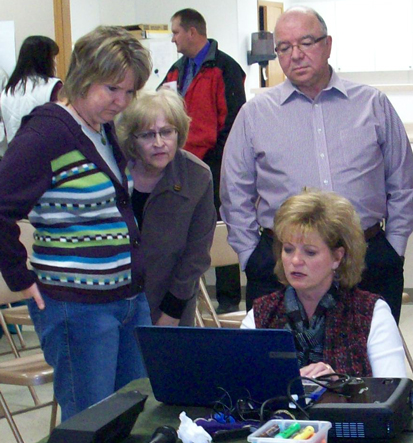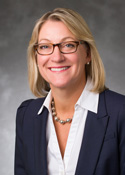 Small towns and rural communities throughout the U.S. are looking for ways to maintain their population base and strengthen their economies. Rural communities in the Ninth Federal Reserve District are no different. But in one Ninth District state, South Dakota, their efforts are buoyed by a partner that directs its energy at both stimulating rural business leadership and maintaining the population of small, rural towns.
Small towns and rural communities throughout the U.S. are looking for ways to maintain their population base and strengthen their economies. Rural communities in the Ninth Federal Reserve District are no different. But in one Ninth District state, South Dakota, their efforts are buoyed by a partner that directs its energy at both stimulating rural business leadership and maintaining the population of small, rural towns.
That partner is Dakota Resources, a private, not-for-profit rural development organization that provides capacity-building assistance to stimulate financial and human investment in rural communities that invest in themselves. Incorporated in 1996, Dakota Resources focuses specifically on communities in South Dakota with populations under 5,000. Since U.S. Census Bureau estimates show that around 95 percent of the approximately 350 towns and cities in the state have a population below that threshold, the organization has a large constituency.
A focus on assets
By many measures, rural South Dakota is struggling. For example, 50 percent of the state’s rural counties have seen a population decline over the past four years alone, with thousands of residents moving to the metropolitan bookends of the state—Sioux Falls and the Rapid City area—or to the boomtowns of the Bakken oil region in western North Dakota. According to its president, Beth Davis, Dakota Resources helps rural towns in South Dakota take an asset-based approach to economic development by focusing on each community’s unique mix of features. The organization, led by Davis and supported by a staff of seven, provides communities with resources and technical assistance in leadership development, community development, and economic development. One intended outcome of Dakota Resources’ work in revitalizing small, rural economies is the retention of the population. Davis likens Dakota Resources to a coach: “We supply the tools and help introduce and practice winning strategies. Community members are the team, taking the field, working together, and achieving the victory.”
Creating winning strategies requires “believing and behaving differently,” according to Davis. That means engaging individuals, organizations, and the broader community in the change process; emphasizing and modeling collaboration; and building management and leadership skills. The process requires about an 18-month investment of time and attention, starting with forming a Leadership Team made up of community representatives. Team members begin by conducting a community assessment through listening sessions, where they ask fellow community members, What do we have? What do we know? What do we do best? And, What can we do better? From there, Initiative Teams are formed to collect data and take stock of community assets (financial, cultural, social, political, human, natural, and built). Dakota Resources then guides the teams in developing customized strategies for leveraging the identified assets and shifting the community toward change.
Financial support for some of this work comes from fees that are determined by a sliding scale based on the service and the community’s needs and population. Support also comes from philanthropic grants, such as from the St. Paul, Minn.,-based Bush Foundation. Elli Haerter is the manager of the foundation’s activities in North Dakota and South Dakota. She says, “Dakota Resources offers towns and cities new and innovative ways to realize their strengths and tackle their problems with a new lens—to think bigger about what is possible in their community.”
Communities take the field
An example of a Dakota Resources-guided development process in which community members are team players includes Faulkton, S.D., population 737. With the support of a Bush Foundation grant, Dakota Resources directed community members through a series of listening and learning sessions and a multifaceted community-engagement approach. As a result, Faulkton residents are generating positive effects in five separate areas: housing, entrepreneur development, leadership development, quality of life, and philanthropy.
Another example of economic development in which community members take to the field is De Smet, S.D., population 1,110. De Smet residents completed a strategic planning process in 2006 that helped them plan for 20 years of future growth. And in 2012, De Smet Development Corporation opened American Engineered Products (AEP), a manufacturer of flagpoles and lotto machine bases. Financing for the company was secured through Dakota Resources’ Capital Investment Fund, which makes reasonably priced capital available to economic development corporations and revolving loan funds in South Dakota that support local development projects. AEP took advantage of an available and unused building in De Smet’s industrial park and hired 20 De Smet residents.
What Dakota Resources provides is a process, not just assistance, Davis underscores. But she adds that it is not a process done “to” a community; rather, the community learns from and leads itself.
“The real work is done in the community, by committed individuals [who are]… ultimately responsible to themselves, each other, and the community as a whole,” she says.
According to Davis, communities that choose to invest in themselves gain the greatest benefits from their involvement with Dakota Resources. And like any good coach, she says credit goes to the teams’ efforts.
Read more about Dakota Resources and its activities at www.dakotaresources.org.
Angela Eilers is the regional outreach director for the Minneapolis Fed. She can be reached at angela.eilers@mpls.frb.org or 612-204-5174.





